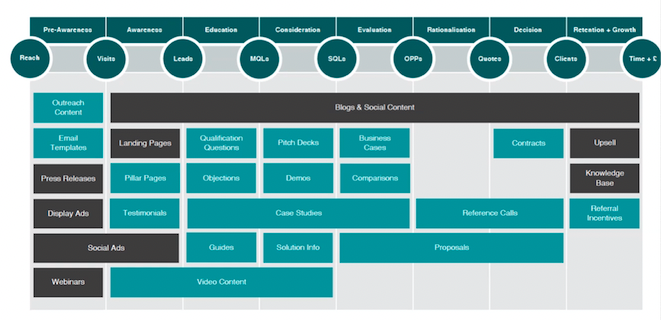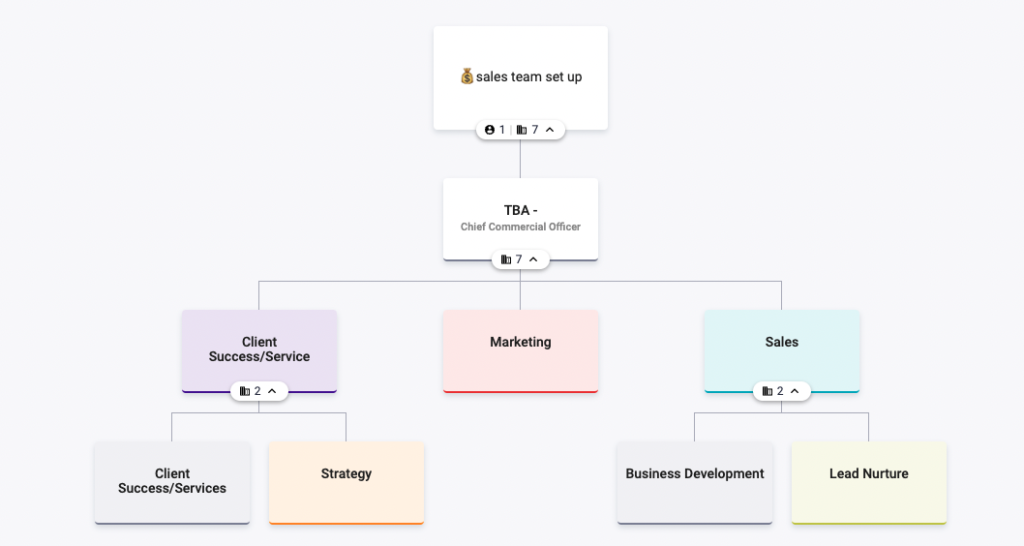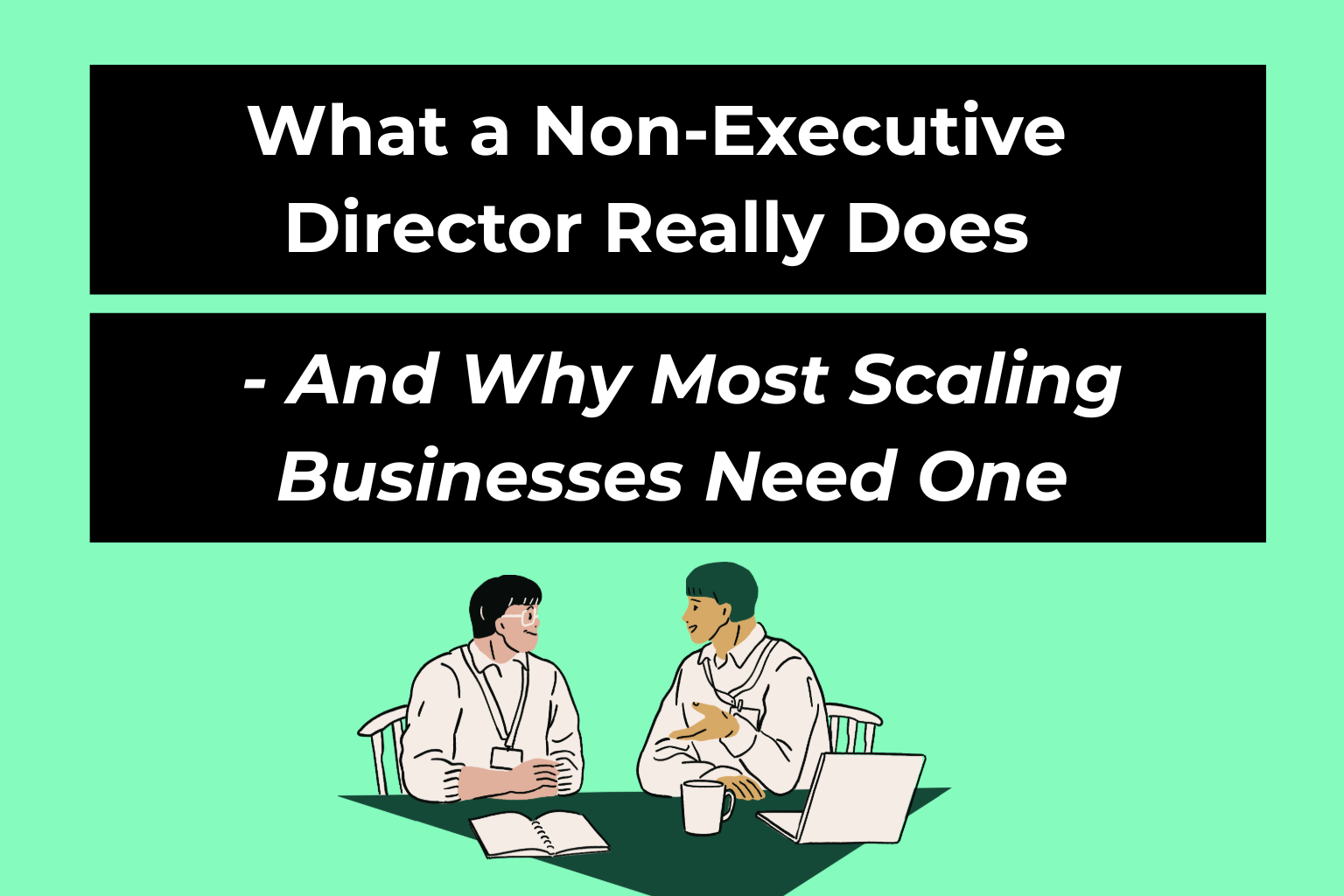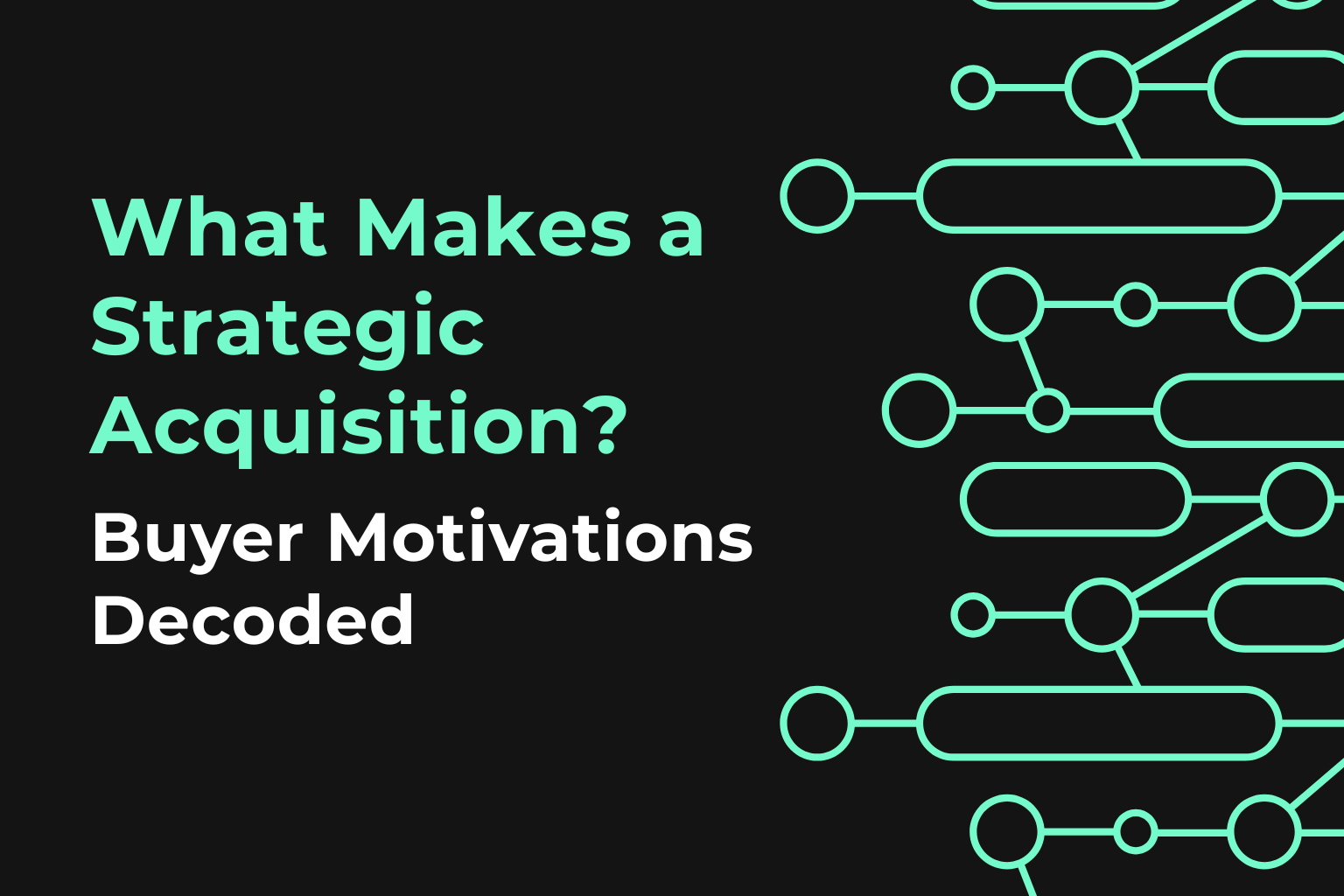“Ninety percent of selling is conviction and 10 percent is persuasion.”
Truly great sales strategy and execution is the bedrock of any and all business and yet, so few are great at it.
It’s an issue I see time and time again across start-ups, agencies and later stage scale up businesses, and it slowly manifests as a major barrier to growth.
By the time the business realises something is wrong the damage is significant.
Summarising why this happens is not easy. The reason for poor sales traction is often multi-faceted, with a mix of culture, experience and priority errors regularly heading that long list.
But most often at all the mistake is really to do with general approach with too many seeing sales as an outbound ‘push’ experience, in an era where an abundance of choice means that buyers can simply turn their backs to it and look elsewhere.
The key is to follow the simple advice below and…
“Make a customer, not a sale.”
The best kind of sales organisations are ones where they don’t appear to be selling at all and instead focus on staying as close as possible to their customers, understanding their pain points, and solving their problems in a frictionless way.
Do you even have a plan?
The problem for many, however, is that there is often a distinct lack of a plan at all. Sure, many pay lip service to having a ‘sales strategy’ but dig in and 90% of the time you will find it is paper thin, lacking in a true understanding of what it actually takes.
Product or tech businesses will be able to talk about product roadmaps all day long, but few stand up to scrutiny around their sales plan, preferring instead to hide behind a vanilla marketing plan that has little anchoring in commerciality.
Hire and they will not come
All too often the answer appears to be ‘run some PPC’ and create a ‘social media plan’. It’s what I like to call pointless marketing, a plan entirely unconnected to the sales and conversion cycle and one where the answer all too often is to ‘hire a marketing person’, expecting that the box is ticked, and the revenue will come rolling in.
Markets are too mature for this now and without a cohesive plan that considers the audience, where they are right now and helps solve their buyer journey they will not simply turn up and start buying.
Too few have a plan
Simply not enough early stage and scale up businesses have enough clarity around how they should be marketing, when and to whom. And agencies are too focused on clients to do anything other than pay lip service to the challenge themselves.
It may seem like the most obvious thing in the world to build a marketing strategy but there is a big difference between creating one and truly understanding if it is right for your stage of business.
Forget ‘brand’ to begin with
For those that do have a plan the preference for many is to focus on marketing that drives brand awareness, as opposed to hard sales. Sure, the plan will have a level of acquisition marketing in it but
Marketing performance is what you are looking to achieve
Getting it right
It is not particularly helpful of course, to simply suggest there is a ‘better way’ of course. You’ll be wondering what this means in practical terms as an approach to sales if your own strategy is to be improved.
And improve it must if you are to achieve your full potential.
Keep it Simple
Critically, the most important point to make is that complexity is the enemy of progress and growth for the majority of start-up and scale up businesses.
After helping more than 100 agencies, scale-up and start-ups grow, I’ve found that there are only four major acquisition lanes that drive scalable growth:
- Paid acquisition
- Content
- Virality
- Sales
And it always starts with a single channel fed by the heartbeat of any credible marketing plan – truly world class content focused intensely on adding value to and finding solutions to the problems faced by your key audiences.
The B2B approach
I’ll be very clear though that this is not a ‘how to’ post. The idea is not to guide you through a step-by-step of marketing. Instead, my points are directional, based on observations from the conversations and experiences gained from spending thousands of hours with start-ups and scale ups over the last decade.
And what is abundantly clear from the pitches I sit through is that whilst almost every business has a ‘product plan’ very few have a well-rounded marketing and acquisition plan – and this needs to change if we are to see more successful businesses grown in the UK and further afield.
To dig into the process more deeply for both B2C and B2B businesses would require a tomb, so instead for the sake of this post I’ll focus on the latter and bring the approach to life a little more as B2B and B2C marketing are now very, very different disciplines.
The plan, over the coming months, is to create a much more significant vault of super helpful guides and ‘how to’ here on the Scaled site, but for now let’s dive in to the B2B sales and marketing plan that has worked for me across many businesses.
Is it marketing or sales?
We’ll start by making the point that B2B sales really is much less direct than it used to be. The days of cold calling are, in the main, consigned to the past. For some businesses it is still a tactic that can yield results but for the many the approach now should be focused on adding value and staying ‘front of mind’.
And to do that you must first starts with…
Understanding customer
As a journalist 20 years ago a (much wiser) editor than I once told me that if I ‘stayed as close as possible ‘to my audience the I ‘wouldn’t ever be far wrong’. It’s advice that has continued to guide me as I became a marketer and (eventual) agency leader as the North Star of any marketing plan. Sense that its missing and you are almost always looking at a plan doomed to failure.
As for the ‘how’, there are, as always, some great guides out there (like this one and this one) built to walk you through the process of how you can use existing quantitative data sources and qualitative techniques to create a clear picture of who it is you should be serving.
Such clarity around ‘who’ then gives you a much better understanding of the ‘what’ and the ‘where’ of your strategy in targeting businesses. The next stage is to find a framework to ‘hang’ the ‘what’ from as a way to ensure your content strategy aligns to the journey your new-found audience is making.
Funnel based sales and marketing
The single best way of organising your strategy is around the purchase funnel. A framework designed around the various stages of purchase help you design a content strategy that is genuinely helpful to your prospective buyer. Those key stages of consideration can be seen below.

You’ll be wondering, of course, what this has to do with sales, and the subject line of this post. But remember the point here. Great sales, especially in the B2B space is no longer about hard-nosed cold outreach but adding value, staying forefront in the mind of your prospects and nurturing relationships.
Free planner
Exactly what content you create is a matter for your business of course. Your buyer personas will drive the format and subjects you’ll need to cover but to help you ensure that no stages of the funnel are underserved, I’ve created this free template for you.
It is designed to help you record the results of any brainstorm in a content planner, so you know what goes live when and which part of the buyer journey it supports.
To download it simply fill out the form and click on the button below.
It is designed based on this overview of the sales content creation process and together they give you all the ammunition you need to hang your specific content ideas from in a logical order safe in the knowledge that no stone has been left unturned.

This diagram shows you examples of the types of content you can use to help your prospects at the various stages of the funnel as well as how that corresponds with the stages of your sales CRM.
By creating great quality content at the stages where it matters you then give your ‘sales team’ something to go on.
Lead nurture
But rather than label it as sales, and this is an important switch in nomenclature, my view has always been to describe the process of following up as lead nurture. It’s softens the coldness and ‘salesy’ approach and also helps you hire people more suited to relationship building than hardens selling.
Their job is to monitor your CRM, looking for triggers that you may set up for buy ‘tells’. It maybe they have interacted with certain pages of your site a certain number of times or may have worked their way down your workflows to a point at which it suggests they are preparing to buy.
Whatever the triggers it is important to have someone focused on picking up the phone and building rapport, understanding whether they really are ready to buy, and to assemble the *right* troops if they are.
Assembling the team
Before we dive into the process of lead nurture however, it’s worth taking a step back and talking for a moment about ‘sales’ team structure. Clearly this will look different for an early stage start up than it will for a more mature scale up, but the structure can be helpful in designing your overall plan.
It’s hard, of course, to create a generic example as every business is slightly different but here, we can see the top-level thinking:

The point here is that both sales and marketing sit under the same leader; in this case the CCO. Some businesses may also have account management/client service function also and the point of this team is, ultimately, to create upsell and cross sell opportunity for the strategy team (often subject matter experts) to close.
The same is then also true on the sales side with lead nurture creating pitch/sales opportunity for the strategy and business development teams to close.
The nurture process
There will be many variations of the above of course but it gives some insight into the importance of firstly having great content designed by a data-led content team within marketing, fed through a great and robust CRM strategy and through to your lead nurture team.
Their job is to regularly check in with leads, building rapport, understanding where they actually are in the buy cycle and what may be preventing them from buying now.
This information can be fed into the business development team, whose job it is to set up face to face conversations, often with someone from the strategy team who may be an expert in the field they are specifically interested in.
The point of that meet is to come away with a pitch opportunity, whether that be through a ‘free’ strategy review session or an actual pitch – basically anything that allows your business to really bring to life the value your solution would bring to their business right now.
And any client service/account management team can and should work in a very similar way, just with existing clients. Their role is to build trust and deepen relationships, get to know more and more people with the organisation and finding more ‘problems’ you can help fix via products and services that you offer.
They, again, plug into strategy to develop expert solutions and close the deal because the saying really is true:
“If you’re not selling to your existing clients then they are another steps towards the door’.
Conclusion
And so, there you have it, that’s a whistle stop tour across the top of what a good quality B2B sales machine really should look like in 2022. Sure, there’s a huge amount more detail across every stage here but it should give you some ideas around how you can tweak your existing structure and process to create a better sales engine.
And remember, above all:
“I like to think of sales as the ability to gracefully persuade, not manipulate, a person or persons into a win-win situation.”
Do that, and it’s not actually sales at all….



